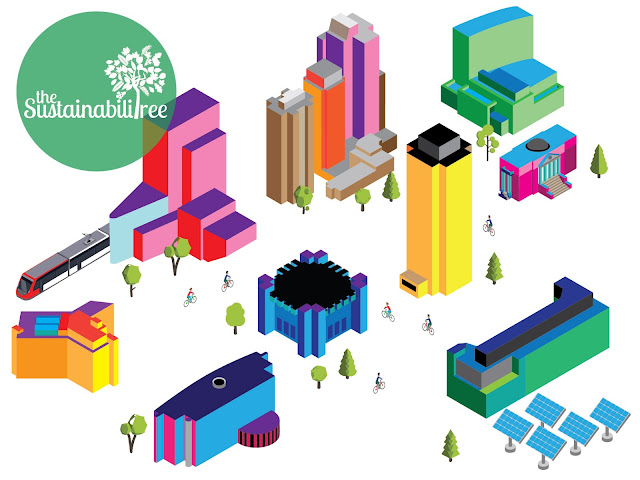One year in and we are can sort of see the light at the end of the tunnel. With a COVID vaccine on the way, we can take comfort that many of the restrictions we see today will be toned down. But, with vaccines having an efficacy rate of up to 95%, that could still potentially mean a lot of cases after everyone is inoculated.
(5% of Canada's population of 35 Million = 1,750,000 potential cases across the country after vaccination, but herd immunity will slow down and prevent infections)
So it is prudent to think that there will still be the need for some COVID precautions after mass vaccine campaigns are finished. But beyond COVID, there are other reasons we might want to keep up some precautions. This time last year, Canada had reported over 26,000 cases of the flu, and this year there were 57... IN THE ENTIRE COUNTRY!!! Clearly, with a bit of prudence, there can be a significant drop in communicable diseases.
At the start of the summer of 2020, people were venturing outside to catch some sun after months of being locked up. Naturally, people wanted to spread out to keep COVID numbers low, leading to some very interesting changes in how urban spaces were being used in many cities. Restaurants took advantage of patios, people listened to concerts online, and the rates of cycling shot up to record highs, all in an effort o stay safe in these pandemic times.
So what can we learn from a year of living under extreme precaution and what kind of practices should we adopt moving forward?
For the most part, university campuses were closed and activities in-person were restricted. So if students and staff return in the fall of 2021 or for the winter semester 2022, there a many changes that we can implement to reduce the spread of any viruses, but also to improve our collective quality of life.
More working from home
For staff and students, there could be more opportunities to do some of their work from home. This would of course reduce the number of people on campus, but also, it would reduce the amount of emissions created to travel to the campus. This could come in handy for days with inclement weather, or when you don't have time to come to campus because of other obligations, or if you are feeling a little ill.
Taking sick days seriously
On that last note, another change might be obligating people to stay home when they are ill. As we mentioned earlier, flu cases are way down this year. This is probably the case for the common cold and other seasonal illnesses. The broad acceptance of teleconferencing will allow staff and student to stay home and avoid contact with others, ultimately reducing the spread of diseases and accelerating the recovery process from these illnesses.
More and larger pedestrian spaces
Recognizing that the last part of anyone's commute is made on foot, the campus could increase the amount of space for pedestrians to spread out. The easiest way to accomplish this would be to reduce the number of vehicles on campus and letting people use the roads for more active forms of transportation.
More cycling infrastructure
The explosion of cyclists in the summer of 2020 is an opportunity that we should not take lightly. Travelling by bike to campus is one of the least carbon intensive activities, and promotes good health. But to ensure that cyclists feel safe, there needs to be more bike racks (spread apart to allow for distancing) and clearly defined bike lanes.
More greenspace
The desire to be outdoors was perhaps never more evident than when there were restrictions that prevented it. In order to give the community more opportunities to be outside, the campus could increase the amount of greenspaces. These could be used for studying, relaxing, lounging, or catching up with people (at a distance if required).
More outdoor activities
Planning events outdoors is always tricky because you never know if it might rain. But it is obvious that people are willing to take that chance. Restaurants and clothing stores took advantage of the additional space that municipalities granted them. This could be a thing on campus too. The Free Store could be outside more, there could be more picnic tables and outdoor seating, perhaps some smaller classes could be outdoors, and some sports could be brought outdoors (like jogging, cycling, badminton, dodgeball, maybe a few obstacle courses, etc).
But these are just the things that we can already pivot and do on campus. There are other activities that could be added with a little bit of investment. Think more community gardens, some farmers markets, a few more concerts, and maybe some cultural festivals.
This is by no means an exhaustive list, but it does go to show that there are some lessons to be learned from the pandemic. If you have some suggestions about how we could improve the campus post-COVID, send us your ideas. We would love to hear them.













Comments